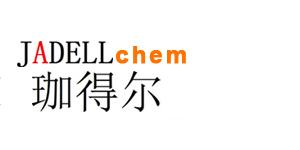Recombinant Mouse RANK L/TNFSF11 是来源于 E. coli 的 TNF 相关的活化诱导细胞因子。人源和鼠源 RANK L/TNFSF11 的同源性约为 82%。Recombinant Mouse RANK L/TNFSF11 诱导 JNK 的激活,增强 T 细胞生长和树突细胞功能,诱导破骨细胞生成和淋巴结器官生成。
Synonyms
rMuRANK L/TNFSF11; TRANCE; CD254
Species
MouseSource
E. coli Accession
O35235 Gene ID
21943 Molecular Weight
Approximately 20.1 kDa AA Sequence
QRFSGAPAMM EGSWLDVAQR GKPEAQPFAH LTINAASIPS GSHKVTLSSW YHDRGWAKIS NMTLSNGKLR VNQDGFYYLY ANICFRHHET SGSVPTDYLQ LMVYVVKTSI KIPSSHNLMK GGSTKNWSGN SEFHFYSINV GGFFKLRAGE EISIQVSNPS LLDPDQDATY FGAFKVQDID Biological Activity
The ED50 is 0.2-1 ng/mL as measured by RAW 264.7 mouse monocyte/macrophage cells. Appearance
Lyophilized powder. Formulation
Lyophilized after extensive dialysis against 20 mM Tris, 150 mM NaCl, 1 mM EDTA, pH 8.0. Endotoxin Level
<1.0 EU/μg, determined by LAL method. Reconstitution
Reconstitute the lyophilized recombinant Mouse RANK L/TNFSF11 (rMuRANK L/TNFSF11) to 100 µg/mL using ddH2O. Storage & Stability
Lyophilized recombinant Mouse RANK L/TNFSF11 (rMuRANK L/TNFSF11) is stored at -20°C. After reconstitution, it is stable at 4°C for 1 week or -20°C for longer. It is recommended to freeze aliquots at -20°C or -80°C for extended storage. Shipping
Room temperature in continental US; may vary elsewhere. Background
Receptor activator of NF-κB ligand (RANKL), its cellular receptor, receptor activator of NF-κB (RANK), and the decoy receptor osteoprotegerin (OPG) constitute a novel cytokine system. RANKL produced by osteoblastic lineage cells and activated T lymphocytes is the essential factor for osteoclast formation, fusion, activation, and survival, thus resulting in bone resorption and bone loss. RANKL activates its specific receptor, RANK located on osteoclasts and dendritic cells, and its signaling cascade involves stimulation of the c-jun, NF-κB, and serine/threonine kinase PKB/Akt pathways[1]. |



